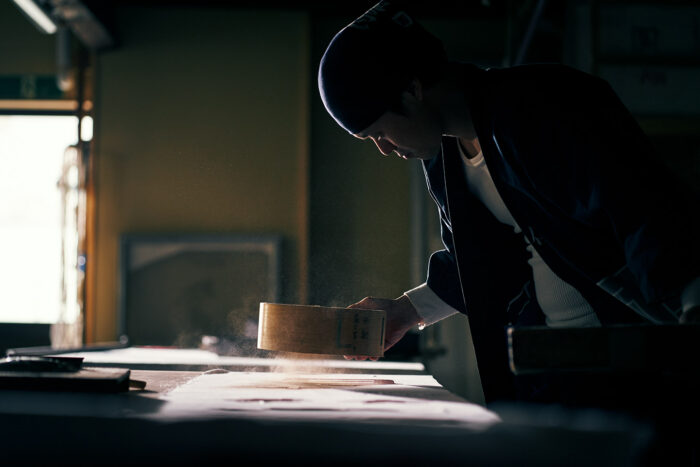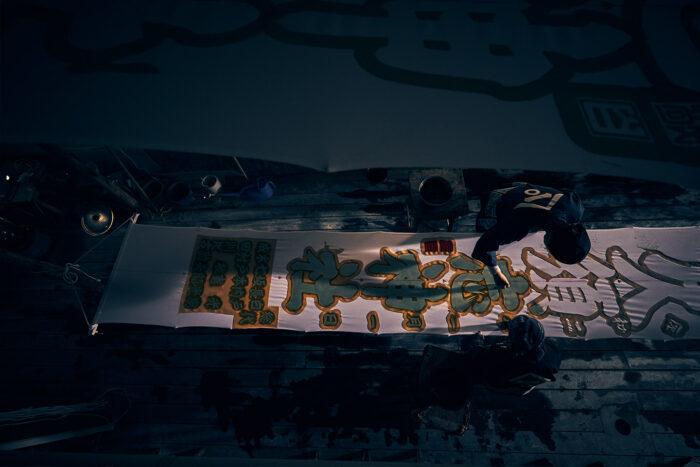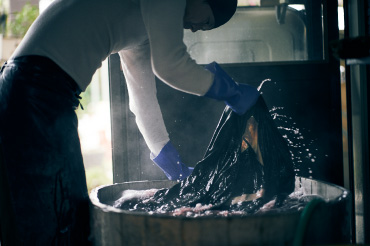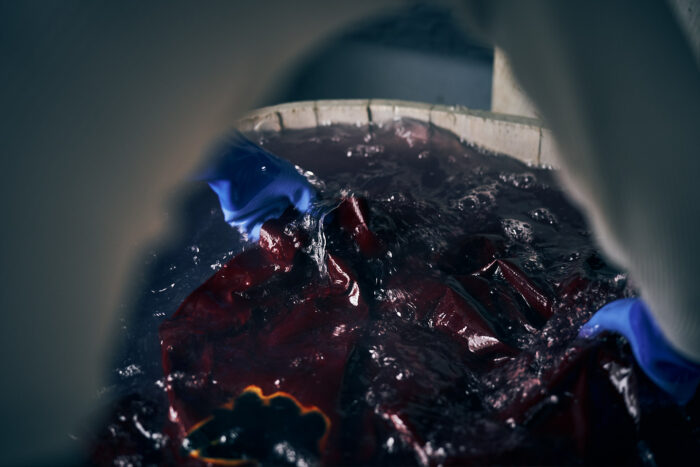Since 1887
From the colorful shrine banners waving in the wind against the blue sky, to the navy blue aprons worn by izakaya staff, to the noren curtains that let through the warm light and laughter of the restaurants you frequent, Nagakan Dyeing Factory has been, and is, unfadingly with you, for more than 130 years.
The history of the Nagakan Dyeing Factory dates back to 1887. Records show it was founded by dyeing craftsman Kanbei Nagano in Moto-Aramachi (present-day Aoba-ku Ichibancho), producing the happi coats and aprons used by merchants, craftsman, and other residents of the city.
The original Nagakan Dyeing Factory was destroyed in 1945 during the bombing of Sendai during WWII. It was rebuilt in its current location of Minami-Someishimachi with several other dyeing factories, which developed the the area into a vibrant dye works neighbourhood.
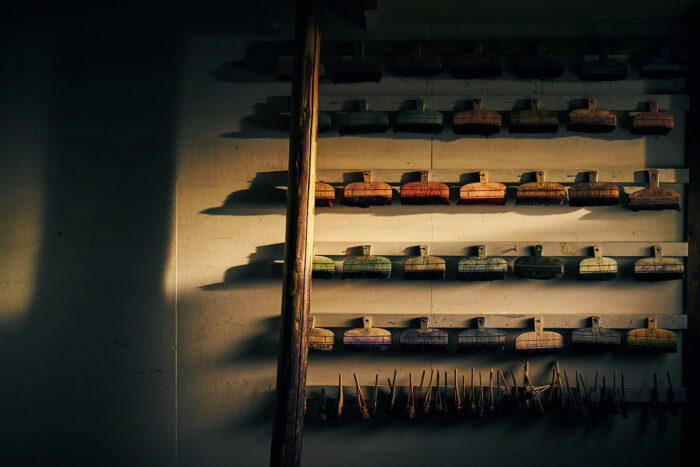

Minami-Someishimachi's Shichigoburi Canal earned the nickname of "Indigo River" from the locals, because its abundant waters ran blue from all the washing of dark blue cloth. The sight of the canal lined with dyers washing their wares became an iconic symbol of the area and its traditions.
After the war, orders for fisherman's flags increased and the dye factories' fields were filled with the dazzling colors of fisherman's flags drying in the sun. These flags, made through a process of layering many different dyes, required a high degree of technical skill, and in 1985, Nagakan Dyeing Factory was recognized by Sendai City with its award for Technical Achievement.
When the feudal lord Date Masamune built the city of Sendai at the end of the Sengoku Period (early 1600's), he brought six dye masters with him from his native Iwadeyama. Nagakan Dyeing Factory has inherited the skills of these dye artisans and continues to pass them down today.
